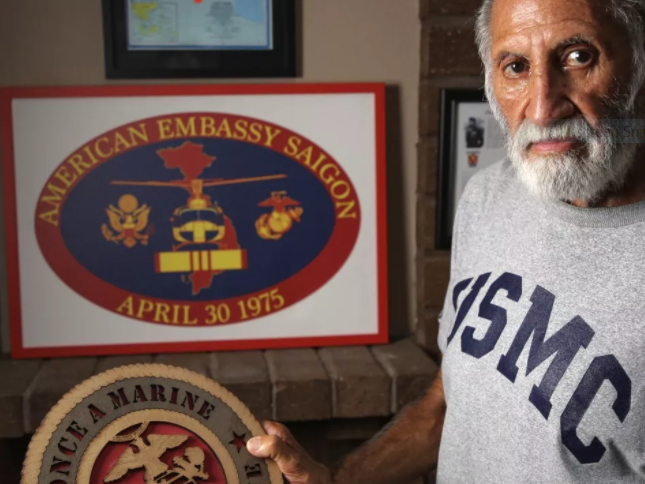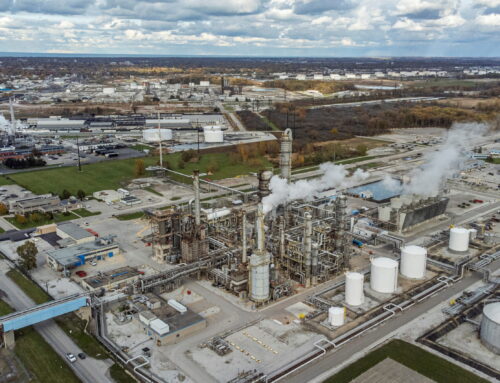Published:August 21, 2021
-American Military News
The images this week of people desperate to flee their country as a prolonged U.S. military occupation comes to an ignominious end looked familiar to retired Master Gunnery Sgt. Juan Valdez. The 84-year-old veteran was the last Marine off the roof of the U.S. Embassy in Saigon, South Vietnam, in 1975.
To Valdez, the fall of Kabul is worse than that of Saigon, which was renamed Ho Chi Minh City in 1976, because of the fate he said awaits Afghans who worked with the U.S. during two decades of occupation.
“It definitely is worse,” Valdez, who lives in Oceanside, said during an interview Thursday. The scenes playing out on the news bother him, he said, and he’s especially worried about the fate of Afghan women under a renewed Taliban government.
“They don’t want to send them to school or let them have jobs,” he said.
Scenes of helicopters ferrying desperate people off the roof of the U.S. Embassy in Saigon came to symbolize the failure of the U.S. to achieve its stated mission in that country — to stop the spread of communism in southeast Asia — after a long and brutal conflict.
In an interview with Leatherneck Magazine in 1975, Valdez recounted how he arrived in South Vietnam in late 1974 as part of the embassy security detail. In the spring, as North Vietnamese troops bore in on the city, Americans and their Vietnamese dependents, friends and acquaintances swarmed the embassy to try to arrange exit visas. Valdez and other Marines were posted around the embassy entrances and exits, as in the final week a sense of desperation crept into the crowds.
Valdez said that while at the U.S. embassy’s wall in Saigon he climbed on the back of another Marine in order to pull people over so they could evacuate. Others, he said, never made it that far.
“Many people were left behind,” he said. “They were supposed to come to the embassy, and they did. Other people never got close to the gate. They ended up staying there.”
When the North Vietnamese began shelling the main Saigon airstrip, it became clear any evacuation would have to be made from the embassy itself. Word was given to begin evacuation from the embassy by helicopter. Valdez and the other Marines set up a perimeter around the embassy lobby. As the last Americans were led up the building stairwell to the roof, the Marines jammed equipment against the roof door to seal it off.
When the final CH-46 helicopter lifted off, another passenger had to help pull Valdez aboard.
Today’s videos of Afghans flocking to Kabul’s Hamid Karzai International Airport as the Taliban seized control of the country’s capitol almost immediately drew comparisons to the fall of Saigon. Some pushed back against the comparison — citing different political contexts domestically — but troops who were there in 1975, such as Valdez, saw history repeating itself.
Stuart Herrington, 79, a retired Army officer living in Carlsbad, agreed with Valdez’ assessment.
“Despite protestations to the contrary, the truth of the matter is it doesn’t look like Saigon — it’s worse,” said Herrington, who is also the author of two books about the Vietnam war. He said the fate of those left behind will be worse under the Taliban than it was for the Vietnamese.
“The Vietnamese were stalwart, controlled and disciplined even at their worst moments compared to this,” he said.
Herrington, who retired from the Army as a colonel in 1998, was a captain in 1975 stationed at the embassy as a linguist. Like Valdez, he left Vietnam on April 30 of that year in a helicopter from the embassy’s roof.
He said leaving Vietnamese people who’d helped the U.S. behind was a betrayal — one that’s being repeated today.
“When I got on the helicopter on the roof of the embassy, I was in tears,” Herrington said. “The final betrayal of the Vietnamese took place in the parking lot of that embassy. You learn to live with it, to put it aside. It’s difficult to bear.”
He said service members on the ground in Kabul — including about 1,000 Marines from Camp Pendleton — will likely carry what they see with them the rest of their lives.
“Americans over there are doing their damnedest and are heartbroken for what they’re forced to endure,” he said. “A lot of them will carry that to their graves. It will drive them up the wall.”




